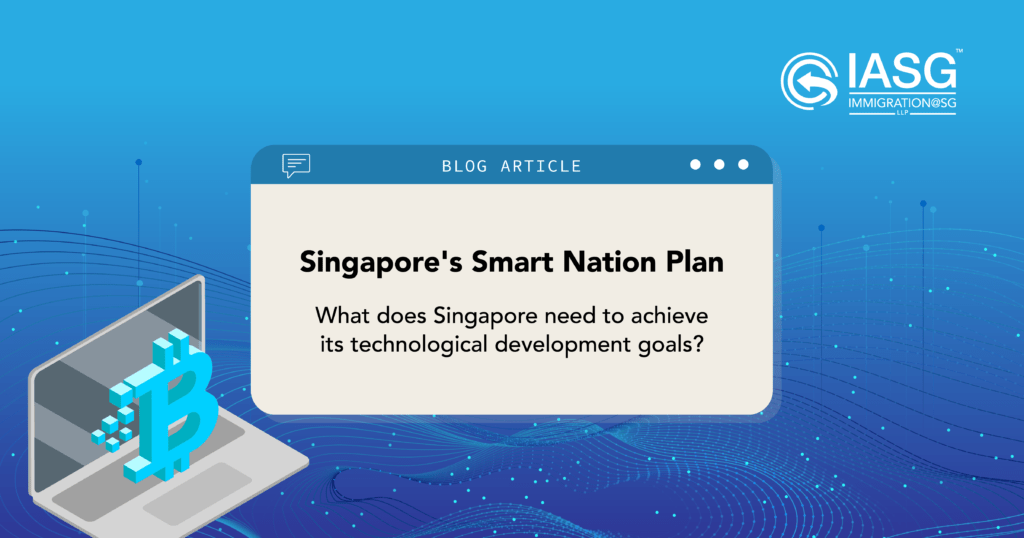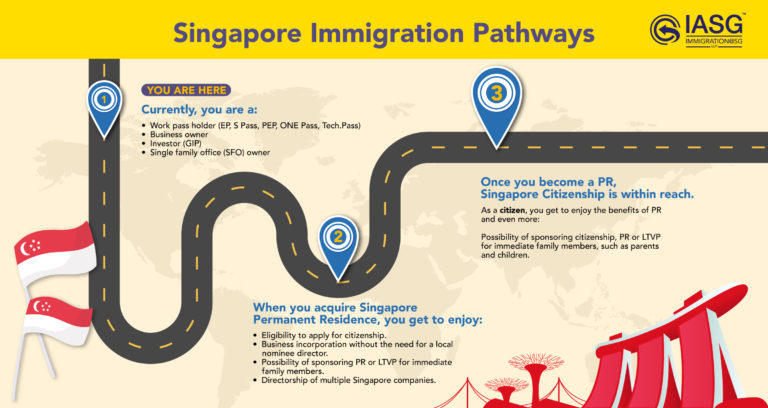Digitalising Singapore has been mandated to be one of Singapore’s key national goals. A term that gained traction in the last decade, digitalisation is envisioned as a means of nation-building where industries and individuals equip themselves to be future ready. Singapore’s plans for digitalisation are outlined in several national agendas such as “RIE 2025” and the Smart Nation plan.
Smart Nation Plan: How Can Singapore Achieve Its Goals?
At its very core, the Smart Nation plan is meant to improve citizens’ quality of life and elevate Singapore’s global status as an Innovation and Technology hub. The Smart Nation plan is an ambitious undertaking that requires the cooperation of government, economy and the entire society – a feat that cannot be achieved without some help. Before exploring all the ways Singapore plans to realise its Smart Nation vision, one must understand the ideas that undergird the project.
Digitalisation as a Solution and Transformative Force
The core idea of a Smart Nation is to harness the power of technological disruption, a global force, to our advantage. Technology presents many possible solutions to Singapore’s resource scarcity, manpower shortages and limited land space. It helps build and is a new source of comparative advantage.
To solve these problems, Singapore plans to undertake digital transformation in three key areas: government, economy and society. Digitalising these institutions involves the transformation of key national domains such as health, transport, urban solutions, finance and education. In turn, this deepens the digital integration of government services, economic activities and everyday life. Besides enabling Singapore to meet its social and economic development goals, digitalisation helps Singapore become a truly “Smart Nation”, where technology becomes a way of life, across all ages.
Challenges to Digitalisation
The first obstacle standing in the way of Singapore’s Smart Nation vision is the shortage of experienced, qualified information technology (IT) professionals.
Digitalisation is a large-scale, long-term project. It involves numerous concurrent, sweeping initiatives: they range from the development of smart systems to optimise transportation to new policy measures to encourage the growth of the fintech sector. In other words, these changes entail an overhaul of many aspects of society. They require intensive manpower and extensive innovation to undertake. In particular, many of these tasks involve complex new technologies such as deep tech and cybersecurity programmes.
Supply of Talented Workforce
These rapid developments have created a huge demand for professionals in data science, cybersecurity, robotics and artificial intelligence. However, supply of qualified local manpower is critically short: 6,000 jobs remain unfilled in the infocomm sector and local universities only produce an average of 3,100 graduates a year—hardly enough to fill the 20,000 placements available. If 1.2 million digital workers are needed for Singapore to remain competitive by 2025, then the current manpower shortage needs to be solved—and fast.
Investing in Frontier Technologies
This manpower shortage is compounded by the second obstacle, the need to invest in frontier, cutting-edge technologies. Frontier technologies refer to “potentially disruptive technologies that can address large-scale challenges or opportunities”, such as Artificial Intelligence, blockchain and Virtual Reality. Such technologies are nascent, highly-complex and sophisticated and often extremely advanced; they often demand the extensive experience, training and international exposure that many local professionals lack. These additional requirements further thin the pool of qualified local talent Singapore needs for its Smart Nation goals. The stress on local supply is further intensified as Singapore needs these frontier technologies to overcome its population, workforce and resource constraints. Technologies such as personalisation and anticipatory services automate menial tasks, freeing up precious human labour for more value-added tasks. Other frontier technologies open up new sources of comparative advantage and industries needed for Singapore to stay competitive.
Singapore has taken some actions to address these issues. Over the next five years, the country is investing up to $150 million into research through AI Singapore, modifying talent attraction and manpower policies across its ministries and agencies to facilitate the employment of IT talent and initiating programmes such as the AI Business Partnership Programme to accelerate AI adoption within the private sector. Yet, these measures do not sufficiently resolve the core issue of manpower shortage. The best solution to this issue is to attract more foreign talent, which will be explained below.
The Need for Foreign IT Talent
Singapore has recognised its need for foreign tech talent: its recent introduction of the Tech.Pass, aimed at attracting tech entrepreneurs, investors, experts and instructors, is proof of this. Attracting foreign talent achieves two goals: 1) plugging the manpower gap in the short run and 2) enabling long-term knowledge transfer & skills upgrading to produce more indigenous capacity in the long run.
Attracting foreign talent helps supplement the existing local tech workforce both in numbers and skills-wise. Foreign professionals boost the supply of tech professionals within Singapore and bring with them expertise, skills and unique experiences developed from their time abroad. This temporarily plugs the skills gap as well. Foreign professionals thus complement local expertise and experience in digital development as well as ease the manpower shortage itself, accelerating the rate of digitalisation.
The presence of foreign professionals, particularly tech entrepreneurs, also open up numerous opportunities for the development of new skills and experiences locally. The new Tech.Pass aims to attract these professionals to incorporate companies here, particularly those dealing in nascent and frontier technologies in AI, VR and cybersecurity. In doing so, these entrepreneurs and investors can employ local talent and professionals, whose skills and familiarity with the local digital landscape are valued. In turn, these local professionals can gain exposure to and training in the development, testing and launching of such technologies by working closely with their foreign colleagues and mentors, or by attending skills workshops organised by their companies. This process of knowledge transfer is crucial in developing indigenous innovation capacity and management, increasing the pool of existing qualified talent. This also accelerates the process of grooming future talent to decrease time lag and thus increase manpower availability.
Achieving the Smart Nation Plan
With the introduction of Tech.Pass, it is clear that the Singapore Government is increasingly prioritising the technology sector in its bid to build a Smart Nation. This development presents more ripe opportunities for foreigners to settle here, but the process of becoming a Permanent Resident or a Citizen is never straightforward or simple.
IASG has assisted many professionals, including those working in IT sectors, obtain Singapore PR and Citizenship status, and one key step of the process is to keep abreast of industry trends. Our services include writing the Singapore PR cover letter, as well as a gauging one’s chances using a proprietary points calculator as part of conducting our Initial Profile Analysis. Each application is formulated in a way that emphasises each applicant’s unique skill-sets.
Take advantage of this opportunity to help build Singapore’s future economy!







